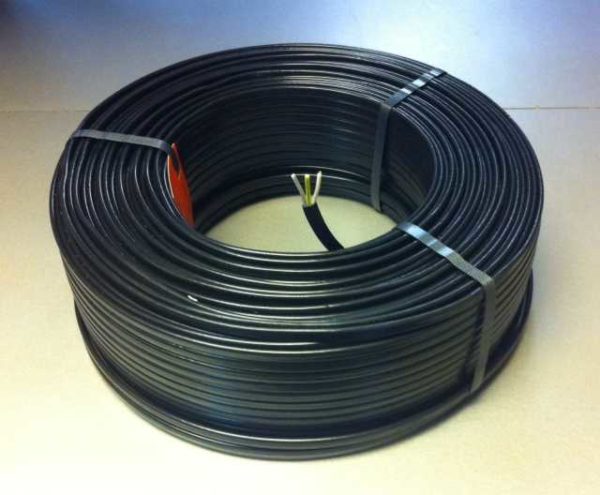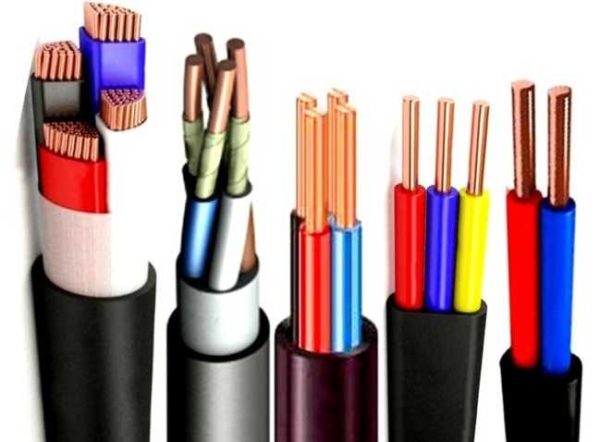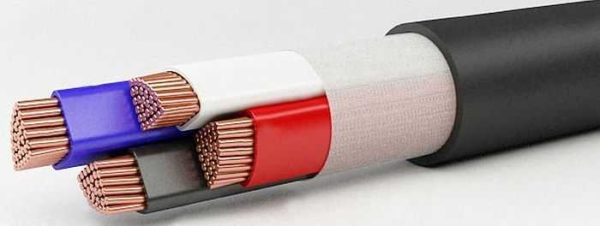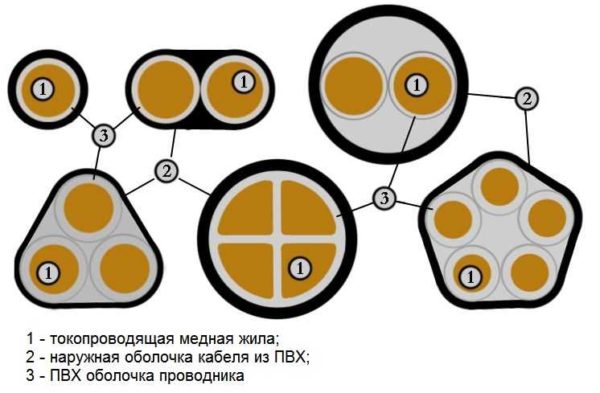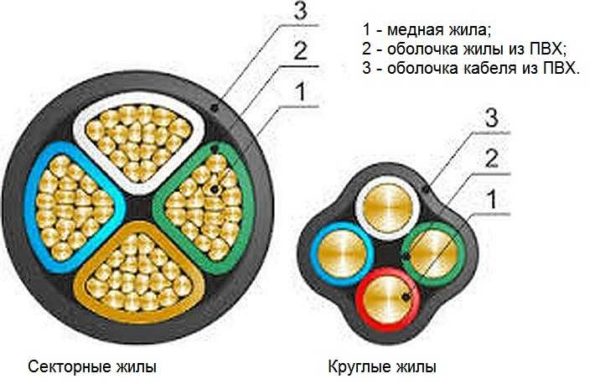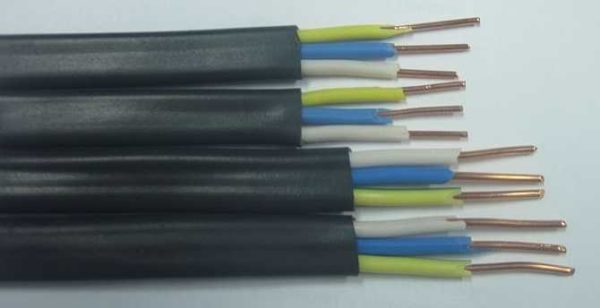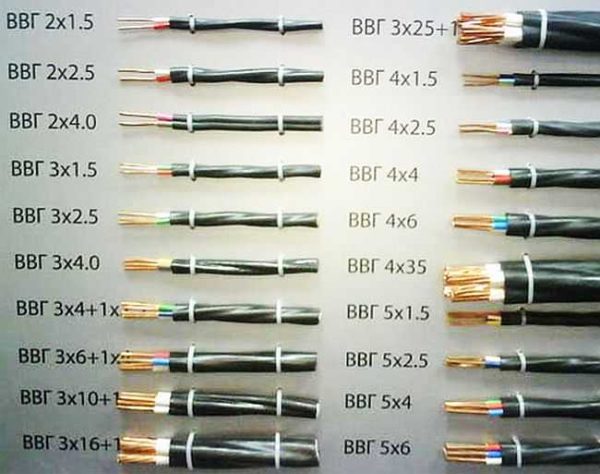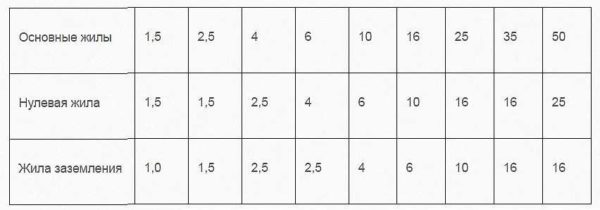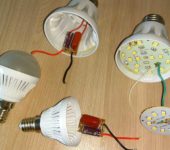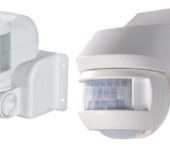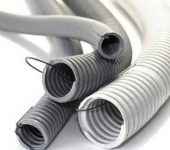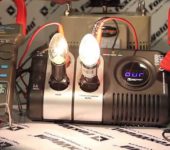Technical characteristics of the VVG power cable
It is almost impossible to live without electricity today. We are more and more dependent on the availability of electricity, because the power grids accompany us everywhere - in enterprises, in public institutions, in houses and apartments, in summer cottages. Literally everywhere where a person spends at least some more or less long period of time. And most often, VVG cable and its modifications are used for wiring.
The content of the article
VVG cable: scope
When laying / replacing wiring, other electrical work in private houses and apartments, VVG cable is most often used. This is due to a wide range of applications and a relatively low price. It can be used in electrical networks with a voltage not exceeding 1000 V and a frequency of 50 Hz (special types up to 100 Hz). That is, it is suitable for single-phase and three-phase networks. Can be mounted indoors and outdoors. In case of external laying it needs additional protection. It is placed in HDPE pipes, cable trays, etc.
It is not recommended to use its spacers in the ground, as it does not have armor, which is why it quickly breaks down. If desired, it can be laid in the ground, but in an additional protective sheath (corrugated pipe) and / or in a cable duct.
The scope largely depends on the modification: the type of material from which the sheaths of the cores and the cable itself are made. Let's talk about this in more detail a little further.
Decryption and modifications
To understand what is the difference between different types of this cable, you need to know the decoding of the name. Then you can decide which of the species suits you best.
Normal VVG
Decoding the main abbreviation - VVG - is not difficult:
- the absence of the letter A in front indicates that the veins are copper;
- the first letter "B" denotes the insulation material of the conductors - PVC (polyvinyl chloride);
- the second letter "B" - cable insulation material - also PVC;
- "G" - indicates the absence of additional protection (armor or other protective shells).
That is, the VVG cable consists of several copper conductors and PVC insulation. Each of the wires has its own color (read about color codinghere). Conductors are twisted in one plane, protected by a PVC sheath. Conductors can be stranded or single-core (coolant is added in the abbreviation).
In private homes, single core cables are more commonly used. They can have 2, 3, 4 or 5 cores. The cable can be round or flat, with a neutral conductor (blue) and / or with a ground conductor (yellow-green).
Non-combustible VVGng
In fire-hazardous rooms (wooden houses, baths, etc.) and public buildings (children's and medical institutions, in particular), non-combustion cables are required. In such cases, you can use products with low flammability - VVGng. The additional letters "ng" just indicate that the shell does not support combustion.
There are several more types of VVGng cable:
- VVGng-ls. They differ in that this plastic compound of the shells, when burning in an open fire, almost does not emit smoke. (ls - short for English low smoke - small smoke). According to the new rules, it cannot be used in social institutions.
- VVGng-frls. Differs in increased reliability due to the fact that the conductors are additionally protected by two tapes containing mica. That is, each conductor is wrapped with thermal protection, on top of which a sheath made of plastic compound of reduced flammability with minimal smoke emission is applied.Insulated conductors are twisted, on top of them there is an additional protective sheath - of two copper tapes with a thickness of at least 0.1 mm or a copper mesh entwined with one tape. A PVC cable sheath is applied over this protection. This will be the VVGng-FRLS cable. This type of cable can be used at industrial enterprises, including at nuclear power plants, in explosive zones, except for zones of class B-1.
- VVGng-LSLTx. In this subspecies, for the sheaths of conductors and cables, a plasticizer with a reduced flammability is used, which, when burned, emits less smoke and this smoke is less toxic. This conductor remains operational in case of fire, is used in networks with alternating voltage up to 1000 V, frequency up to 100 Hz or up to 1500 V at constant voltage. Can be used in social institutions.
- VVGng HF. This brand differs in that the smoke emitted during combustion (when the NG cable is directly on fire, it still burns) emits smoke with a reduced content of harmful substances. The abbreviation HF itself means that the shells are made of plastic that has a reduced content of halogens (chlorine in particular), thereby reducing the toxicity of smoke (HF - from the English halogen free - does not contain halogens).
So, what is the difference between a conventional VVG cable from VVGng and its varieties? A conventional VVG conductor does not support combustion with a single laying. Products with the "ng" prefix do not burn even with group laying - in a bundle with other conductors. The rest of the "additives" to the name simply improve the characteristics.
Release forms
Depending on the number and shape of the cores, the VVG cable can be round, flat, triangular or pentagonal (see photo below).
The casings are made of polyvinyl chloride of various modifications. The spaces between the cores are filled with the same plastic compound. In some embodiments, a bundle of the same material is used. With a small cross-section of conductors - up to 25 mm2 - release without filling is allowed.
The cores in the cable are round or sectional. Sectional are usually multi-core, round - single-core. In any case, their cross-section must correspond to the declared parameters (read how to check here).
Technical characteristics of the VVG cable
The features of using different types of VVG cable were described above, and now we will talk about the technical parameters of the conductors of this brand.
- Can be installed down to -15 ° C. At lower temperatures, heating of the cable is necessary, which is not easy to organize (the sheath becomes too rigid, it is very difficult to bend it).
- Operating temperature - from -50 ° C to + 50 ° C. At the same time, when laying outside on the street, additional protection from ultraviolet radiation is needed.
- You can bend with restrictions:
- VVG with single-core conductors, the minimum bending radius is 10 radii;
- with stranded wires - 7.5 radii (due to greater flexibility).
- Permissible heating temperature of conductors:
- at a short circuit at which the conductors remain operational, depending on the manufacturer, it can be from + 160 ° C to + 250 ° C.
- during normal operation + 70 ° C $
- in overload mode + 90 ° C.
- Fire resistance of VVG cables not less than 180 min.
It must be said that the technical characteristics of the VVG cable depend not only on the specific type, but also on the manufacturer. Therefore, before buying, see the cable passport (you can ask the seller). Above are the parameters common to all brands of VVG cable.
It is not surprising that these conductors are very popular - with good technical indicators, they cost relatively little, they can be used almost everywhere - both in enterprises and offices, as well as in houses and apartments.
Section and number of cores
The cross-section of the conductors of the VVG cable of any brand can be from 1.5 mm2 up to 240 mm2... Conductors with conductors up to 35 mm are usually on sale2, other larger sizes must be ordered.
As already mentioned, there are VVG cables with 2, 3, 4 and 5 cores. The number of veins is prescribed immediately after the abbreviation: VVG 2 x 3.5; VVGng 4 x 4, etc. The first number is the number of cores, the second is the cross-section of the conductor.
There can be VVG cables with "neutral" and "ground" conductors. Moreover, there are options in which the protective wires are of the same cross section, there are - with a smaller diameter (to save copper and lower cost). Most often, the "earth" conductor is made smaller, in some versions the "neutral" is also made a little less. If the protective conductor has a smaller diameter, it is designated as +1. For example, VVGng 4 x 4.0 + 1 (read as 4 wires with a cross section of 4 mm2 and 1 one step less than 2.5 mm2). Such variants of the VVG cable are also standardized, their parameters are shown in the table below.
Continuous allowable current
When selecting the cable cross-section, the more correct method is for the maximum current. In this regard, such a characteristic is standardized as a long-term permissible current. It depends on the number and cross-section of the cores, as well as on the way of laying - open or closed.
| Section of veins | Continuous current | ||
|---|---|---|---|
| with two main veins | with three main veins | with four main veins | |
| 1.5 mm2 | 24 A | 21 A | 19 A |
| 2.5 mm2 | 33 A | 28 A | 26 A |
| 4 mm2 | 44 A | 37 A | 34 A |
| 6 mm | 56 A | 49 A | 45 A |
| 10 mm | 76 A | 66 A | 61 A |
| 16 mm | 101 A | 87 A | 81 A |
| 25 mm | 134 A | 115 A | 107 A |
| 35 mm | 208 A | 177 A | 165 A |
Two modifications of VVG cables are produced - with a rated voltage of 0.66 kW and 1 kW.

